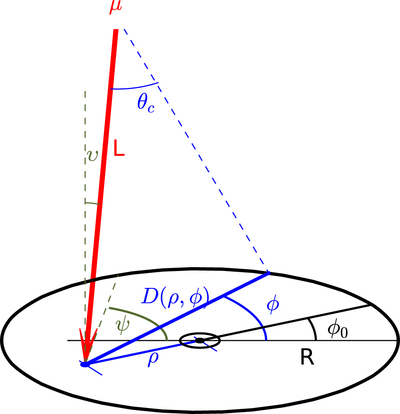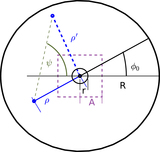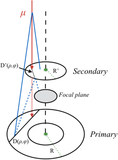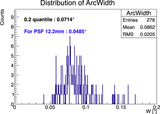Image Details

Caption: Figure 1.
Sketch of the parameters introduced to describe the geometry of a local muon μ and its image in an IACT camera. The muon generates Cerenkov light at the Cerenkov angle θc along its trajectory, which is inclined by the angle υ with respect to the optical axis of the telescope. It finally hits the telescope mirror, of radius R, at an impact distance ρ from its center. The Cerenkov light illuminates the mirror along the chord D(ρ, ϕ), where the azimuth angle ϕ runs from zero to 2π. The angle ϕ0 denotes the azimuth angle of the longest chord. The angle ψ denotes the azimuthal projection of the muon inclination angle, and the small hole in the center the often-found gap at the center of the mirror support. For reasons of visibility, the angles and lengths are not to scale.
Copyright and Terms & Conditions
© 2019. The American Astronomical Society. All rights reserved.












